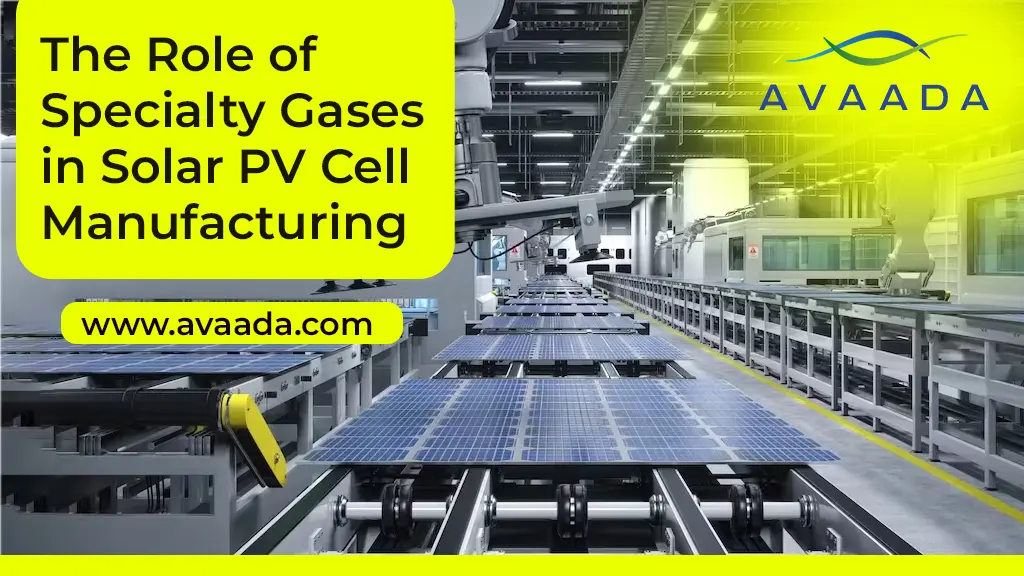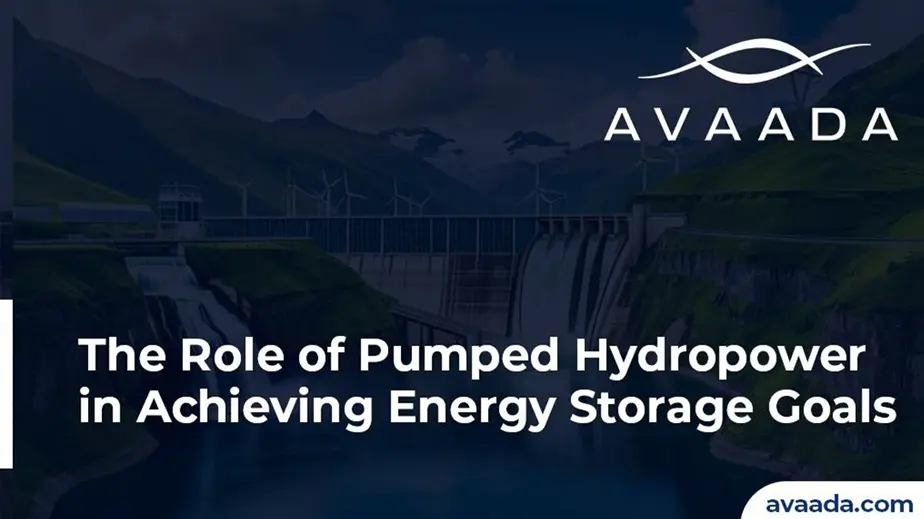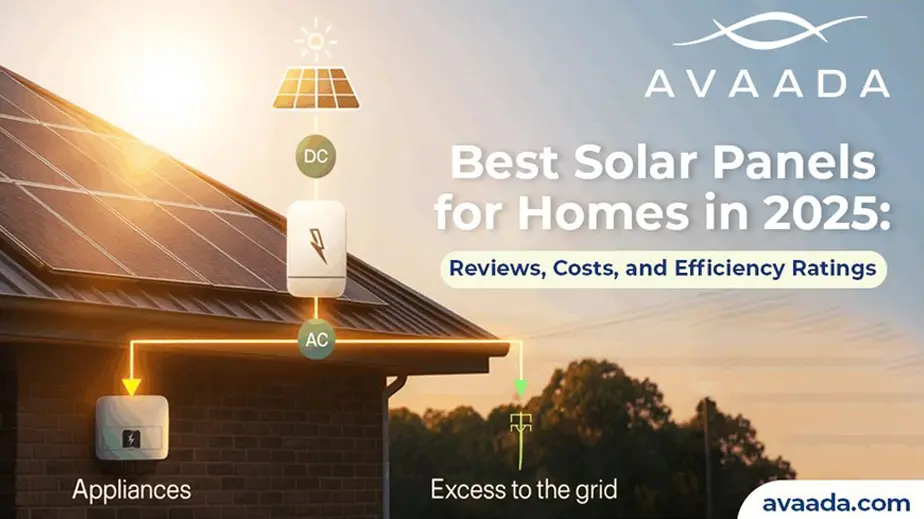As the world shifts toward renewable sources of energy, solar photovoltaic cells have become an essential part of the sustainable source of power. While many focus on efficiency and decreasing the cost of PV cells, the materials and processes involved in making them also are equally important. One of the most critical components, which are specialty gases, The Role of Specialty Gases in Solar PV Cell Manufacturing
As the world shifts toward renewable sources of energy, solar photovoltaic cells have become an essential part of the sustainable source of power. While many focus on efficiency and decreasing the cost of PV cells, the materials and processes involved in making them also are equally important. One of the most critical components, which are specialty gases, is involved in the process, contributing to the quality, efficiency, and lifespan of the solar panel.
1. Speciality Gases in PV Cell Manufacture
Specialty gases, or high-purity gases, are used in advanced process manufacturing. In the solar industry, they play a highly critical role in the deposition process, doping process, and cleaning processes of their production. All these processes represent critical steps to produce very thin layers and structures of a high-performance solar cell.
The quality and accuracy of these high-purity gases are critical to ensure that solar cells are produced with high conversion efficiencies. Any deviation may lead to reduced performance or increased defects, which can be highly critical to the final product.
2. Specialty Gases Used in Solar PV Manufacturing
● Silane (SiH₄)
Silane is a cornerstone in the production of thin-film solar cells. In PECVD, silane is used to create a layer of amorphous or polycrystalline silicon on the substrate. It is deposited on the tunnel oxide layer to form the Topcon solar cell structure’s silicon layer.
The purity of silane directly impacts the uniformity of the silicon layer, ensuring high efficiency in the cell to the controlled application, particularly w.r.t. optimal film thickness and layer uniformity.
Silane is also used in the PECVD process, along with other gases, to form an Anti-reflection coating of Silicon Nitride.
● Hydrogen (H₂)
Hydrogen is crucial in passivating defects in silicon layers. Passivation neutralizes dangling bonds and defects in the silicon structure, which otherwise would have acted as recombination centers for electrons and holes, decreasing efficiency.
● Nitrogen Trifluoride (NF₃)
In solar PV manufacturing, NF₃ is commonly used for cleaning plasma reactors and deposition chambers. These chambers must be kept free from residual materials and contaminants to maintain the precision of subsequent layers.
The high reactivity of NF₃ ensures thorough cleaning without damaging the equipment, reducing downtime and ensuring a consistent manufacturing process.
This gas is used for dry cleaning of the Graphite boats.
Explore our blog on Renewable Energy Certificates (RECs)
● Phosphine (PH₃ in H2) and Boron Trichloride (BCL3): Doping Agents
Doping is one of the most critical processes in the manufacture of a solar PV cell. It introduces impurities into the silicon layers to create p-type and n-type regions. The regions are important in developing the electric field that drives the flow of electrons in a solar cell.
- Phosphine (PH₃) introduces phosphorus atoms for n-type doping.
- Boron Trichloride (BCL3) introduces boron atoms for p-type doping.
These gases must be controlled in their application to achieve accurate doping levels. The results will significantly determine the efficiency and electric characteristics of the solar cell.
● Oxygen (O₂) and Argon (Ar): Reacting Gases and Shielding Gases
Oxygen is a part of silicon oxides, and these oxides can appear in a solar cell as a passivation layer or as anti-reflective coatings; it helps in the reduction of losses in solar radiation through reflection.
Argon, an inert gas, is often employed as a carrier or protective gas during various high-temperature processes, ensuring stable conditions and preventing unwanted reactions.
High-purity Argon gas or Nitrogen gas is used to achieve the consistent quality of the solar Cell.
● Ammonia (NHᴣ)
In TOPCon (Tunnel Oxide Passivated Contact) solar cell technology, ammonia (NH₃) plays a vital role in improving efficiency. It is used to deposit silicon nitride (SiNx) layers that act as anti-reflection coating, enhancing light absorption.
Ammonia also aids in forming the passivating tunnel oxide layer, which reduces surface recombination and improves the contact between the silicon substrate and metal contacts.
The precise use of ammonia ensures uniform deposition of high-quality layers, boosting the performance and durability of TOPCon solar cells.
● Nitrous Oxide (N₂O)
Nitrous Oxide gas (N₂O) is used as a precursor in the formation of the tunnel oxide layer. N₂O plays a key role in oxidizing the silicon surface during the deposition process, creating a thin, high-quality silicon oxide layer that passivates the surface.
This passivation reduces surface recombination, which enhances the overall efficiency of the solar cell by improving charge carrier collection.
The controlled use of N₂O ensures a uniform and precise formation of the tunnel oxide layer, contributing to the long-term performance and stability of TOPCon solar cells.
● Nitrogen Gas (N₂)
Nitrogen gas (N₂) serves as an inert carrier gas in deposition processes like PECVD. It helps maintain stable conditions, preventing unwanted reactions and ensuring precise, uniform deposition of materials such as silicon nitride and tunnel oxide.
This controlled environment reduces defects, ensuring high-quality layers that improve charge carrier collection and overall efficiency.
Nitrogen also minimizes oxidation and contamination, contributing to the durability and long-term performance of TOPCon solar cells.
● Tri Methyl Aluminum (TMA)
Tri Methyl Aluminum gas (TMA) is used primarily as a precursor in the atomic layer deposition (ALD) process to form an aluminum oxide (Al₂O₃) layer. The aluminum oxide layer serves as passivating contacts, improving the efficiency and stability of the solar cell.
TMA is highly reactive and provides excellent control over layer thickness and uniformity, ensuring high-quality passivation of the silicon surface.
3. Enhancing Efficiency and Sustainability with Specialty Gases
The solar industry’s drive for higher efficiency and lower costs has led to innovations in the application of specialty gases. For example:
- High-purity gases reduce contamination risks, leading to fewer defects and higher yields.
- Advanced gas delivery systems provide precise control for minimizing waste and ensuring the reliability of a process.
These new developments further match the solar industry’s bigger objectives of being sustainable and resource-efficient in its activities, and hence specialty gases are an intrinsic part of green energy developments.
4. Specialty Gases in Emerging PV Technologies
The evolution of solar PV technologies, such as perovskite solar cells and tandem cells, has brought new challenges and opportunities for the use of specialty gases. For instance:
- Perovskite cells require specialized atmospheric control during deposition to prevent degradation.
- Tandem cells involve complex multi-layered structures that demand precise doping and deposition, made possible by specialty gases.
As these technologies mature, the role of specialty gases will expand, supporting innovations in cell design and manufacturing processes.
Conclusion:
Specialty gases are the key drivers of solar PV cell manufacturing, enabling the creation of high-efficiency, durable solar panels that power the renewable energy revolution. From deposition and doping to cleaning and passivation, their precise application ensures the performance and reliability of solar cells.
As the solar industry continues to grow, partnering with reliable suppliers for high-purity specialty gases will be crucial for manufacturers aiming to stay ahead in the competitive market. By integrating cutting-edge gas technologies, solar PV manufacturers can enhance efficiency, reduce costs, and contribute to a greener future.
Whether it’s traditional silicon-based cells or next-generation perovskites, specialty gases will remain at the heart of solar PV innovation.








